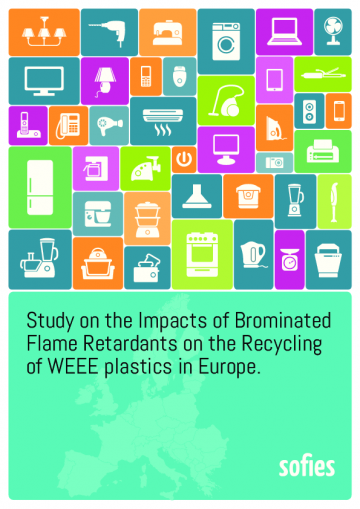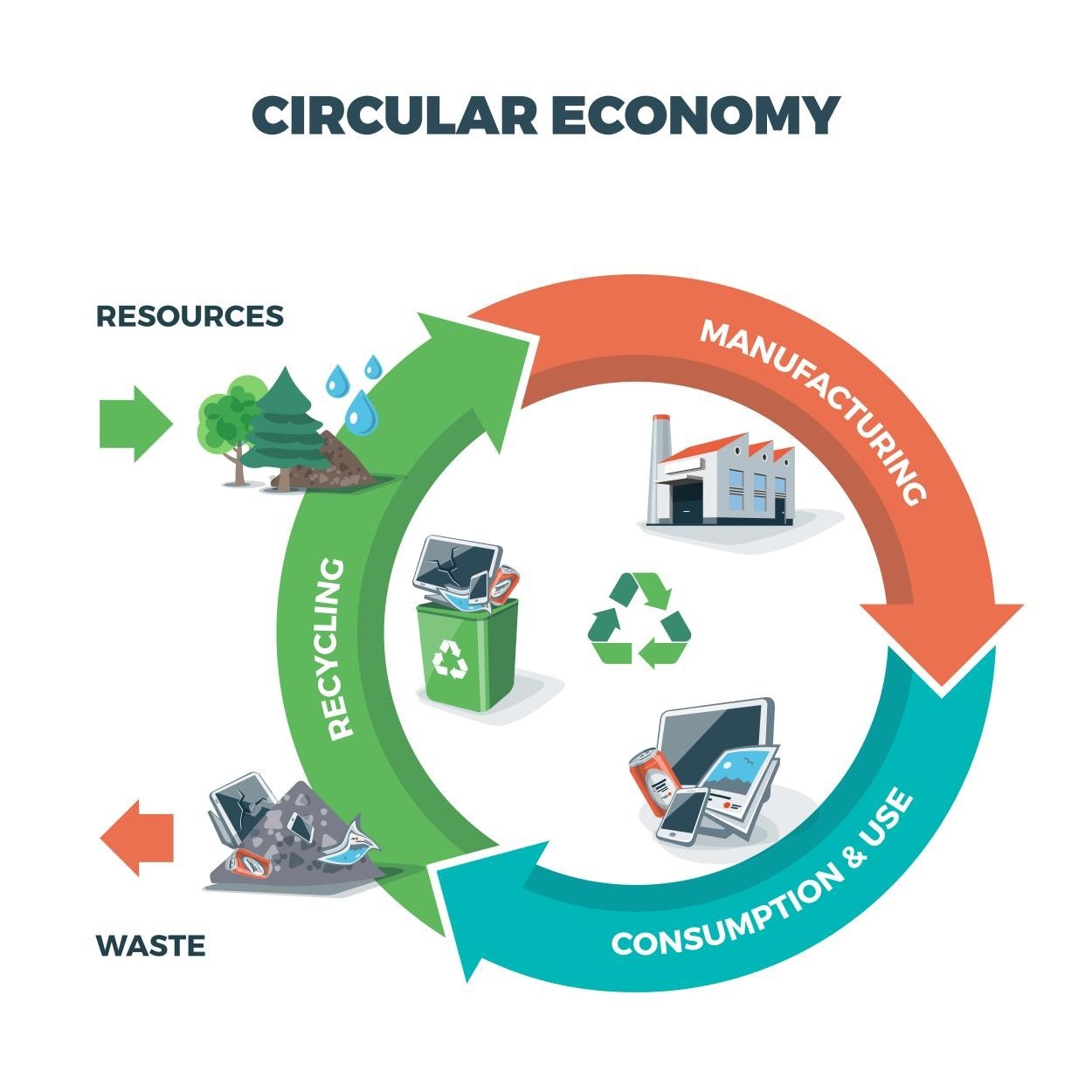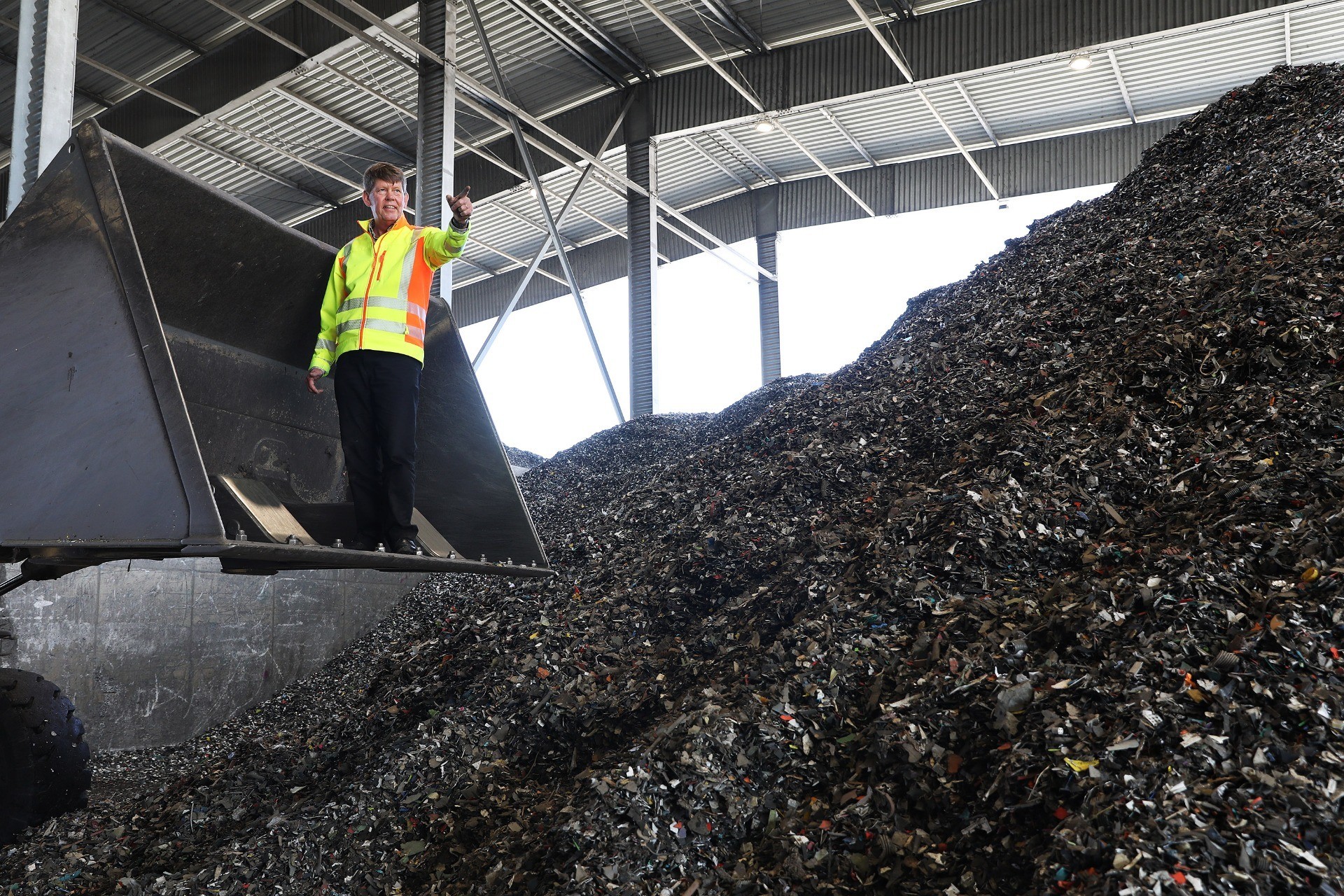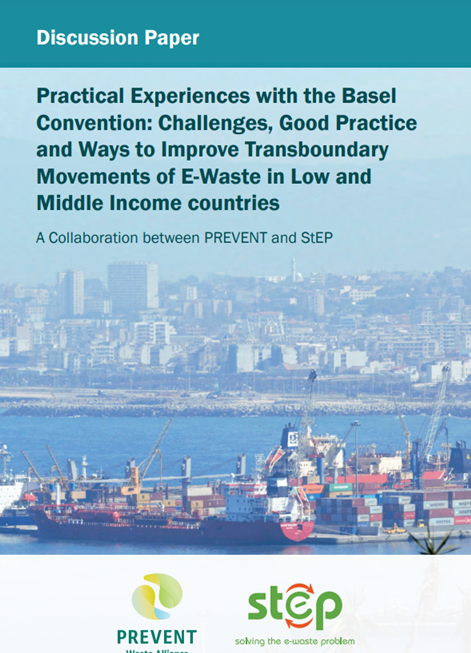„True circular economy cannot be built upon linear thinking!“
In a well-received presentation at the IERC (International Electronics Recycling Congress) in Salzburg in January 2023, Chris Slijkhuis illustrated, among other things, the enormous administrative effort that companies such as the Müller-Guttenbrunn Group have to make to classify and notify E-Waste - WEEE (Waste of Electric and Electronic Equipment) - when it is shipped across borders. His conclusion: „E-Waste classification has become too complex!“
Before diving into the matter of e-waste classification, however, one must shed light on the legal basis in Europe. The basis for the classification and notification of e-waste is firstly the „mother of regulations“ - the Basel Convention (Annex VIII or IX, if applicable), then the „daughter“ - the OECD Waste Shipment Framework, which differs from Basel, and the „son“ - the EU Waste Shipment Regulation and the EU Waste Codes. In addition to these international requirements, many countries carry out classifications according to their own waste codes for the respective exporting and importing country, which further complicate the procedure. In this context, Y-codes, H-codes, UN-codes, UN-classes, UN-numbers, UN-shipping names and customs codes also come into play. „It's just crazy how complicated it has become to classify a truck with e-waste material,“ Slijkhuis reports from the field.
The analysis of e-waste for hazardousness has become defacto impossible!
The MGG-expert considers the distinction between hazardous and non-hazardous waste according to European guidelines to be extremely complex and downright impossible. The SVHC-list (Substances of Very High Concern) now lists 224 chemicals, the REACH Restriction List even more than 1,000 substances in 59 categories and the POP list lists more than 30 substance groups, of which the industry expects that there could soon be 200 groups. „These lists are getting longer every year, for which more and more disposal solutions then have to be found. Analyses of mixed e-waste for hazardousness are no longer possible in practice,“ Slijkhuis noted.
Another complicating factor is that the lists are not harmonised. This means that certain pollutants do not appear at all on one list or another or are classified differently. „The classification needs uniform, harmonised rules. For example, if I have a 25-year-old television set, it is of course quite possible that it contains substances such as brominated flame retardants, which can be classified either as a POP substance or simply as a substance of concern. We should therefore simply accept that all waste can contain substances of concern,“ Slijkhuis pleaded. Mature technologies exist for sorting these substances out of the material mix. For example, 98 % of brominated flame retardants in plastics could be separated out by the recycling industry. The SOFIES study, for example, shows how this can be done.
Slijkhuis: „The mistake is in the mindset!“
According to Slijkhuis, the crucial question is where in the recycling cycle the measurement of hazardous substances should take place: „A circle has the property that it has no beginning and no end. Of course, at some point in the circular economy it must be determined which ingredients are present in the material used. This check makes most sense at the point where the material is recycled and reintroduced into the cycle. One should measure at that point in the cycle where the material changes from waste back into a product. So at the end of the recycling process and not in the middle of one of the many individual stages of the recycling chain!“
According to Chris Slijkhuis, this is exactly the crux of the matter, that people around the world too often „think in linear terms when it comes to a cycle. But that doesn't make sense! A real circular economy does not work with linear thinking patterns!“
In addition, measurements in the contaminated input stream are much more difficult to carry out than in the clean output stream. Especially since it is to be expected that the pollutant load will not decrease, for example, due to new flame retardants that are only recognised as harmful in retrospect. Slijkhuis considers the constant revisions of the REACH, RoHS and POP regulations with ever further reductions in limit values to be a major stumbling block when it comes to recycling more material in the future. Capacity expansions and technology investments in the recycling industry would thus be slowed down. And recycled plastics that are already successfully used in electrical appliances could be taken off the market. These would be clear steps backwards instead of forwards.
When asked how realistic it is for Slijkhuis to have his approach of checking the materials used at the end of the recycling process (where waste becomes a product again), the Dutch visionary replies, alluding to the IERC Honorary Award: „Someone has to start ringing the cowbell! Passing laws that no one can implement makes no sense. Circularity cannot be built upon linear thinking!“
Administrative stumbling block notifications: Lengthy, cumbersome, expensive!
But it was not only basic philosophical thought patterns that were on the agenda of Chris Slijkhuis' IERC presentation, but also very practical challenges such as the problematic issue of waste transports requiring notifications. This is an extremely complex and time-consuming process that has taken the plastics recyclers at MGG Polymers up to four years and always involves many tricky questions: How do I distinguish between hazardous and non-hazardous fractions? Which codes do I have to use? Even more so, where each code leaves a lot of room for interpretation. In practice, all this takes far too long and, above all, shipments from or to third countries outside the EU have become de facto almost impossible. In addition, the notifications require enormous financial resources. Currently, it is estimated that in the EU alone, around one billion euros of capital is tied up in the financial guarantees required for notifications. This complexity of the shipment bureaucracy therefore encourages illegal trade with valuable recyclable waste. A correct notification application with information on the goods to be transported, waste producers, recipients, recovery facilities, transporters and much more can easily fill 50 pages. Unfortunately, not all companies are willing to go to these lengths.
Pioneer Müller-Guttenbrunn Group: Fast Track Notifications!
In order to simplify the bureaucratic hurdles, the Müller-Guttenbrunn Group has helped to develop proposals on how to massively shorten the notification procedures for EU waste shipments to recovery facilities. A pilot project managed a so-called fast-track notification in as little as 19 days. Chris Slijkhuis explains how the idea of fast-track notifications came about: „In the customs world, they had a similar problem. Customs clearances became very complex due to numerous regulations and at some point it was no longer administrable. Therefore, the customs authorities developed a simplification in the 1990s. Without further ado, they defined who was to be considered an Authorised Economic Operator (AEO) and certified and audited them accordingly. These AEOs are allowed to load, seal and ship containers without further inspection of the loads. And these containers no longer need to be inspected until they reach their final destinations.“
A working group of authorities, companies - including the Müller-Guttenbrunn Group - and associations developed proposals for such an accelerated procedure. These proposals have contributed to the inclusion in the new EU Waste Shipment Regulation of a passage stating that in future companies throughout the EU can be certified as „pre-consent recovery facilities“. In addition, electronic procedures were introduced that lead to faster notification procedures. Therefore, notifications to „pre-consent facilities“ are often referred to as fast-track notifications.
In Austria, MGG companies were already recognised as „pre-consent facilities“ many years ago. Fast-track notifications basically simplify legal waste shipments in Europe. „But for the time being, of course, this only applies within the EU,“ says Slijkhuis, pointing out the drawback of this concept. It is possible, however, that this procedure will also be introduced at the OECD level, because the concept of prior consent has already been included in principle in the OECD rules.
The biggest challenges are still with global shipments. As a member of the StEP (Solving the E-Waste Problem) Initiative, Chris Slijkhuis contributed to a working paper entitled „Practical Experiences with the Basel Convention“. The results of this work were presented at the Basel COP (Conference of the Parties) 2022. One proposal of this paper would be a regulation stating that port stops of container ships are not transit and that competent authorities in third countries are provided with more human resources, trained and enabled to carry out notification procedures in a harmonised manner. Countries that have little experience with notifications should be trained accordingly. „Above all, we urgently need faster procedures when it comes to pre-consents. These pre-consents should be established throughout Europe for treatment facilities that comply with the law,“ Slijkhuis demands.
„Unfortunately, the planned improvements will still take time. We are talking about several years. But the improvements and the acceleration through simplification of the notification processes are urgently needed. We absolutely need a change in thinking from linearity to circularity! Because this also goes hand in hand with the realisation that waste should not be considered to be a problem only, waste should be considered as the new raw material source, that opens up a world of material recovery,“ Chris Slijkhuis looks to the future.




